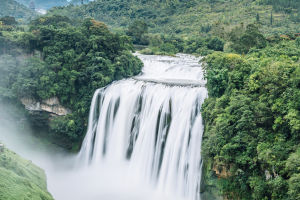Xinjiang, located in the northwest of China, is the largest province in the country, spanning 1.66 million square kilometers—nearly one-sixth of China’s total land area.
Positioned in the heart of Eurasia with a border stretching nearly 6,000 kilometers and shared with eight countries, Xinjiang has cultivated a rich and distinct culture influenced by diverse traditions.
Traveling to Xinjiang offers a journey through the historic Silk Road, where you can immerse yourself in a blend of cultures and explore a variety of ancient sites. The Silk Road, a vital trade route connecting the East and West, has left behind a remarkable collection of relics. From frontier passes, ancient cities, and castles to Buddhist caves, temples, and war-signaling stations, these treasures dot the landscape like pearls along an ancient path.
Top Tourist Attractions in Xinjiang
1. Heavenly Lake - The Pearl of Tianshan Mountain
Nestled at the foot of snow-capped mountains, Heavenly Lake is fed by meltwater from surrounding peaks, creating a crystal-clear oasis. The majestic Bogda Peak reflects in the lake, enhancing the breathtaking beauty of this serene spot.
2. Ili - The Beauty of Nature
The vastness of Xinjiang becomes evident upon visiting Ili, a region known for its stunning landscapes that change with the seasons. From the Narati Grassland to Kalajun Prairie, Huocheng Lavender Farm, and the Xiata Valley, Ili offers some of the most beautiful and diverse natural scenery in Xinjiang.
3. Narati Grassland
As one of the world's top four grasslands, Narati is a sub-alpine meadow bursting with natural life. Its rich history as a pastureland has transformed it into a popular destination for travelers. The landscape includes lush valleys, towering peaks, deep gorges, forests, and endless grasslands. The unique Kazakh cultural heritage adds to the area’s charm, making it a hub for sightseeing, exploration, and recreation.
4. Gobi Desert
Driving through the vast Gobi Desert in Xinjiang is an awe-inspiring experience. The endless stretch of barren land is both desolate and mesmerizing, evoking a sense of infinity. The solitude and raw beauty of the desert provide a tranquil escape, offering a perfect opportunity to clear your mind and immerse yourself in nature.
5. Kanas Nature Reservation Park
A top destination in China, Kanas Nature Reservation Park is famous for its picturesque landscapes and diverse wildlife, including Siberian larches, snow leopards, and Altai frogs. The Tuwa people, living in this region, maintain a unique culture. Legend has it that the Tuwa are descendants of the disabled soldiers left by Genghis Khan during his westward campaigns, adding a fascinating cultural layer to the park's natural beauty.
When is the Best Time to Visit Xinjiang?
The ideal time to visit Xinjiang is from April to November. Depending on your preferences, each season offers a unique experience. For those who enjoy snowy landscapes, Xinjiang can be visited year-round, as it offers winter beauty as well.
Given the vast size of Xinjiang, the weather varies greatly across the region. Travelers may find themselves confused by the range of climates, so it’s important to consider the region's diverse conditions when planning your trip. For a better understanding of the local weather and to optimize your experience, we recommend referring to detailed information on Xinjiang Weather. Let the geographical diversity of Xinjiang guide your journey to its beautiful, ever-changing


